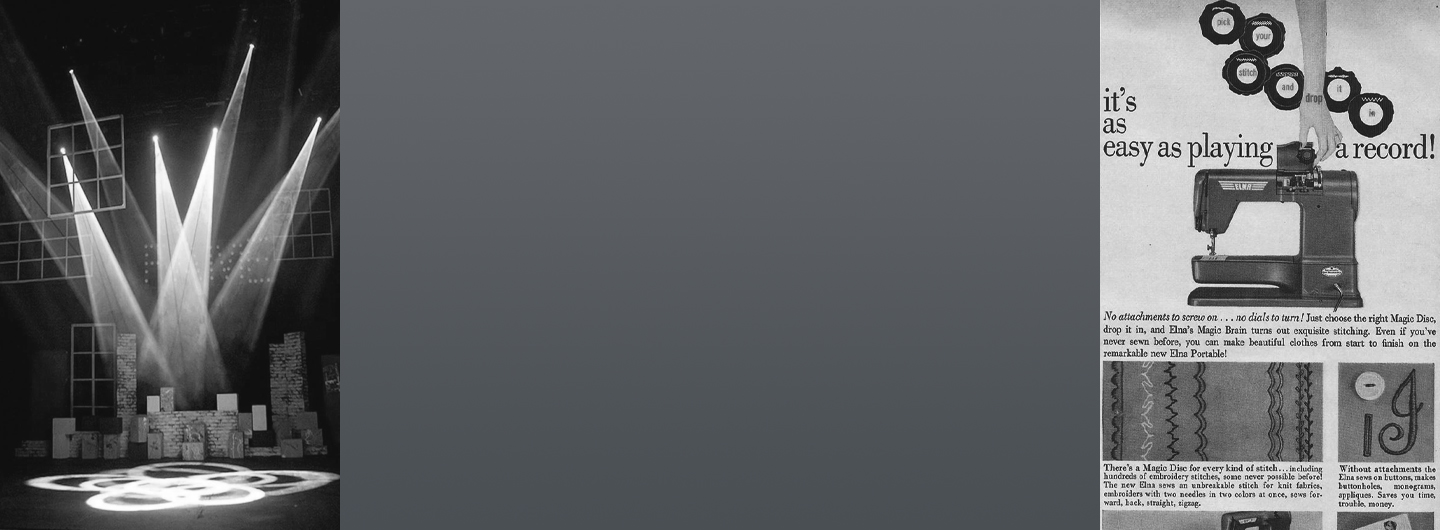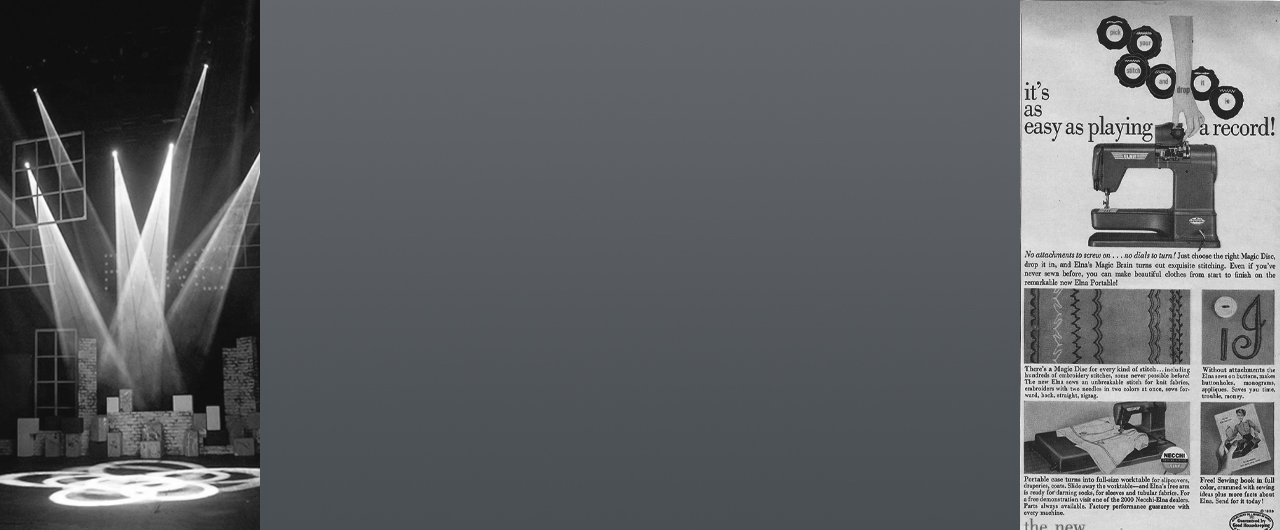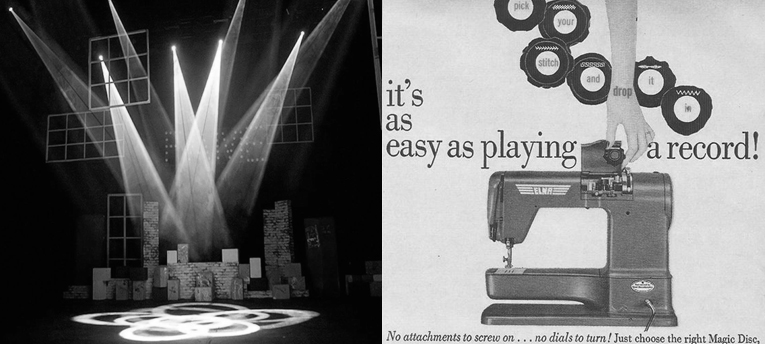





A profile stores information as a two-dimensional shape defined by the boundary between the presence and absence of material. It was once common, for example, to have a portrait taken by cutting a silhouette out of paper by hand. The shape of the boundary identifies the subject. A gobo is another type of silhouette that is placed in a spotlight to project effects onto a theater stage.
Profiles are also used to store information in cams, which are used in machines to transform rotational motion into linear motion. The cam's contour or profile stores information that determines the behavior of the mechanism. Cams played an important role in the industrial revolution in automated looms and other machinery. The hidden mechanism in automata like singing birds and dancing figures often also use cams. In some machines the ability to swap one cam for another enables a single mechanism to execute a variety of motions. Sewing machines, for example, have often offered interchangeable cams to program different stitches.


A cam transforms rotational movement into linear movement. As the cam rotates, a cam follower resting on its outer edge is pushed in and out, producing a linear movement that depends on the profile of the cam. That linear movement can be applied in various ways by the mechanism. A sewing machine cam, for example, drives a mechanism that displaces the needle from side-to-side to produce a particular stich. Swapping in a cam with a different profile gives a different output. As Naydler puts it, a cam "is a very simple form of programming…a means of 'instructing' the machine to perform its simple actions in a particular sequence."
Al Jazari in the 13th century and Leonardo da Vinci in the 15th were early inventors who documented mechanisms based on cams. Cams were crucial in the development of the automated machines that led to the industrial revolution. They drove triphammers, water pumps and carillons. Most cams are built into the machines they control, but removable cams have been used in a variety of applications. Even a music box cylinder can be considered a camshaft, with each pin converting the rotation of the cylinder to the motion of a vibrating tine.


The information in a silhouette is stored in the shape of the boundary between transparency and opacity. This is different from storing information as holes, for which the shape of the hole is irrelevant. The opaque portion of the silhouette is either a coating on a transparent surface, typically glass, or a thin opaque material like paper or sheet metal. The silhouette can be created by adding material, e.g., through painting or lithography, removing material, e.g., scratching or etching, or changing a transparent coating photochemically to make it opaque. The information is accessed by transmitting light through the medium, typically projecting it onto a screen or a photosensitive coating.
Opaque regions can be coated with paint or ink, either by hand or using transfer printing.
Silhouettes can be cut out of an opaque material like metal or paper either by hand or by machine.
Lettering and other artwork can be scratched out of paint on a glass substrate, similarly to how a scratchboard is used to create illustrations. This technique was used to create custom magic lantern slides for announcements by movie theater proprietors and for diagrams and text by educators.
Phototypesetting emerged in the early 1950s. At the time, most typesetting was done with linecasting machines like Linotype and Monotype. Linecasters were large, complex mechanical devices that cast an entire line of type on the fly from a lead alloy, a technology known as hot type or hot metal. Phototypesetting, or cold type, took an entirely different approach. The shapes of characters for a particular font were stored photographically as negative images on a transparent disc or plate. Characters on the disc were exposed to light one at a time by positioning the negative image over photosensitive paper or film and flashing a light. The resulting text was cut out and pasted into a page layout, which was then photographed and used to create offset printing plates.
Although the idea of setting type photographically had been around almost since photography's invention (Goldbach 2025), changing the printing industry was a slow process. According to Louis Moyroud, one of the inventors of Lumitype-Photon:
The printing industry was not research oriented. Inventions usually arose under pressure from needs rather than a scientific or technological base. Most of the inventions were improvements to existing processes instead of radical innovations (Romano 2014, 69).
The International Typographical Union (ITU) was also a factor. Linotype had expanded the printing industry and the union chose to manage adoption rather than fighting it. Phototypesetting and other forms of automation also expanded the industry, but the transition was more difficult to manage: phototypesetting was easier and the wide variety of machines made union training less valuable. Phototypesetting and automation were "the death knell for unionization in the typesetting industry" (Romano 2014, 46).
In the end, the phototypesetting era represented a relatively short transition between hot type and computer typesetting, which emerged in the early 1980s.
A silhouette can be created by coating a transparent substrate with metal, then etching away parts of the coating to create transparent regions. The metal is typically chrome or aluminum. The pattern can be etched chemically or using a laser. Often the surface is coated with a photoresist and exposed to light to transfer the pattern. The photoresist hardens where exposed to light and the unexposed resist is then removed. Etching chemicals are then applied. The metal coating is protected where the resist has hardened. The rest of the metal is etched away, leaving a transparent region.
Phototype.Philipp Goldbach. Accessed Apr. 30, 2025.